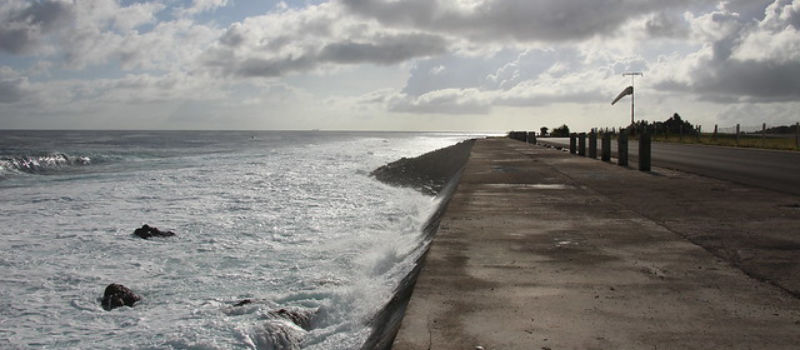American Unwillingness, Pacific Island Helplessness?
June 27, 2019 | Expert Insights

Background
Over the course of the past century, the Pacific Island region has been affected by increased temperatures and sea-level rise, together with other climate-linked changes such as the frequency of tropical cyclones.
The Paris Agreement on Climate Change was drawn up to augment the ability of countries to deal with the impacts of global climate change. The central aim of the Paris Agreement is to strengthen the global response to the threat of climate change by keeping the global temperature rise below 2 degrees celsius. To reach these ambitious goals and appropriate financial flows, a new technology framework was put in place, thus supporting action by developing countries and the most vulnerable ones, in line with their own objectives.
Analysis
For many of these states, the current forecast for rising sea levels due to climate change will severely impact their territory. For Tuvalu, Kiribati and the Marshall Islands, rising sea levels are a genuine and immediate existential threat, as they exist on territory that rises only a few meters above sea level at best. This means that any rise in the sea level, no matter how incremental, eats into their very limited landmass. The current predicted sea level rise of 2 meters by the year 2100 would mean an almost total submersion for these three states.
Other states in the area will also be greatly affected. Five low-lying islands within the Solomon archipelago have already been submerged. Changes in both geographic features and water temperatures also have the potential to alter the fishing stocks that Pacific Island states rely on for food security, making the Paris Agreement of fundamental importance to them.
The decision by President Donald Trump to withdraw the United States from the Paris Agreement has thus been the cause for much alarm across the Pacific. The Pacific Island states are some of the most vocal advocates for aggressive carbon reduction targets, and had welcomed the agreement at the time of its creation.
The USA is currently the second-highest carbon emitter in the world with about 5414 million metric tons of carbon dioxide emissions per year. These emissions amount to more than those of the third, fourth and fifth-highest emitters combined, all of which are party to the Agreement. This is precisely why the Pacific Island states are so concerned by Trump’s decision.
Counterfactual
Despite Trump’s decision to withdraw from the Paris Agreement, there still remains a glimmer of hope for these island nations. The very same day that Trump withdrew from the agreement, the governors of California, Washington and New York announced the United States Climate Alliance in opposition to Trump’s announcement. The Alliance pledged their continued support to climate action to meet the Paris Agreement. Several other states quickly followed suit, and the states that have so far agreed to the deal would together represent the world’s third-largest economy, behind only China and the United States itself.
In such a manner, these states may still reach the climate targets since all action is not necessarily at the level of the federal government. At the end of the day, it is the cities in which people use fossil fuels that is will determine the extend of emission. Thus, if states like California and cities like New York continue to reduce emissions and put tight regulatory measures in place, it may well turn out that the US as a whole can abide by its obligations under the Paris Climate Agreement.
Assessment
Our assessment is that the US withdrawal from the Paris Agreement will vastly decrease funding for environmental protection and climate science. Moreover, it will adversely affect the efforts by the Pacific Island States in countering climate change as they were heavily dependent on the US to deal with technical issues of environmental degradation. We also feel that it will severely hamper the efforts of other stakeholders in reducing the temperature to the 2 degree celsius threshold.
We believe that if individual political leaders manage to reduce emissions through the United States Climate Alliance to conform with the Paris Agreement, the Pacific Island nations have a fighting chance to remain in their territories. We believe that the existential threat that rising sea levels pose to the Pacific Island countries provide them with a unique moral authority to speak out on climate change. The international community must mobilise and do everything in its capacity to prevent the permanent displacement of these innocent people.
Image Source: https://www.flickr.com/photos/dfataustralianaid/12045534665








Comments